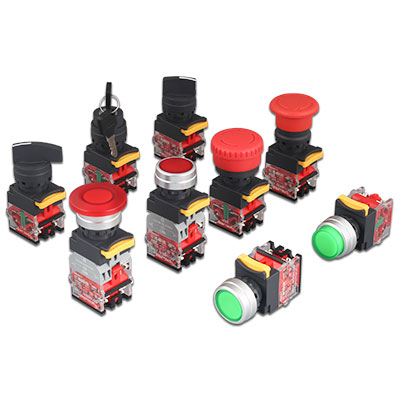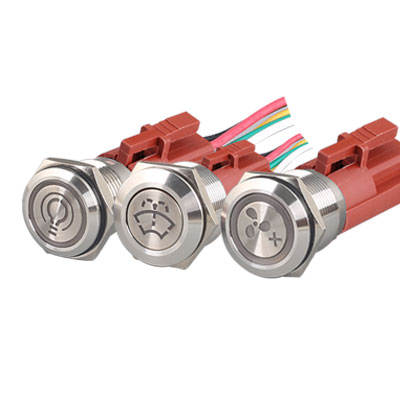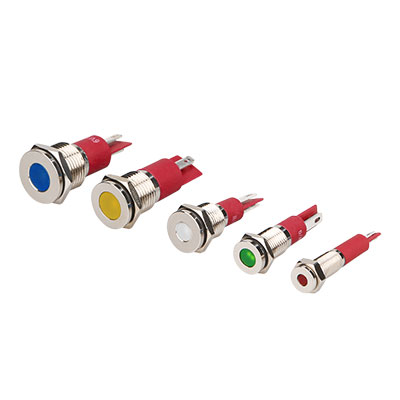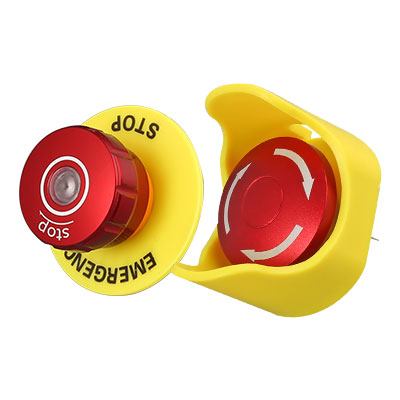How to identify the momentary push button switch?
When it comes to electrical switches, especially in the realm of control panels and electronic devices, understanding the distinction between different types is essential. Among these, the "momentary push button switch" stands out as a key component in various applications. In this article, we'll delve into the world of momentary push button switches, helping you master the art of identifying and utilizing them effectively.
Understanding the Momentary Push Button Switch
Momentary vs. Latching: One of the primary distinctions in switches is between momentary and latching types. A momentary push button switch, as the name suggests, only maintains its state as long as it's being pressed. Once you release it, it returns to its default position, making momentary switches ideal for functions like starting or stopping a machine.
Physical Characteristics: Momentary switches often feature a spring-loaded mechanism that ensures they return to their off state when pressure is removed. Visually, they typically resemble small buttons or domes on control panels. The user must apply force to activate them momentarily.
Applications: Momentary push button switches find widespread use in control panels, machinery, automotive applications, and even consumer electronics. For example, they're commonly found on computer mice, remote controls, and in industrial settings to initiate emergency stops.
Understanding Types of Momentary Push Button Switches and Their Common Uses
Normally Open (NO) Switches
How They Work:
Normally open switches start in an "off" state. When you press them, they close the circuit, allowing electricity to pass through.
Common Applications:
These switches are ideal in situations where you need to activate a device temporarily, such as push-to-talk buttons in two-way radios or start buttons on machines.
Normally Closed (NC) Switches
How They Work:
Opposite to the normally open, normally closed switches stay in the "on" position. Pressing the button opens the circuit, cutting off the current.
Common Applications:
They are frequently used in safety-related systems. Emergency stop controls in factories are a good example, where pressing the switch immediately halts machine operation.
Double Throw (DT) Switches
How They Work:
Double throw switches provide the ability to switch between two different circuits. When pressed, they alternate the current from one circuit to another.
Common Applications:
These switches are instrumental for tasks requiring switching between two output options, like toggling different lights or selecting between alternate power sources.
By understanding these switches and their applications, you can effectively determine which type best suits your needs.
Identifying Momentary Push Button Switches
- Appearance: Look for small, often circular, or rectangular buttons on a control panel. Momentary switches are designed for brief, intentional presses.
- Tactile Feedback: Press the button gently. Momentary switches provide tactile feedback, meaning you'll feel a slight resistance and hear a soft click when they activate.
- Release Action: Release the button. If it returns to its default position on its own, it's likely a momentary switch. Latching switches, on the other hand, stay in the activated position until manually reset.
- Labeling: Check for labels or markings on or around the button, which may indicate its function or type.
Tips for Installing and Maintaining Momentary Push Button Switches
When it comes to momentary push button switches, proper installation and maintenance are key to ensuring they perform reliably over time. Here are some essential tips to follow:
-
Secure Wiring and Connectivity: Begin by ensuring all wiring is correctly routed and connections are securely fastened. Loose wires can lead to malfunctioning switches, so double-check these connections during the initial installation.
-
Match Voltage and Current Ratings: It’s important to choose switches with voltage and current ratings that match the specific requirements of your application. Mismatched ratings can lead to premature failure and potential safety hazards.
-
Routine Inspection and Cleaning: Regularly inspect the switches for any signs of dirt or debris accumulation. A simple cleanse with a suitable electronics cleaner can help prevent operational issues and maintain smooth functioning.
-
Diagnosing Common Issues: Familiarize yourself with troubleshooting practices for common problems like intermittent switch operation or buttons that occasionally stick. Knowing how to address these issues can save time and frustration.
Our Waterproof Momentary Push Buttons
At HBAN PUSH BUTTON SWITCHES, we pride ourselves on delivering top-quality electrical components, including momentary push button switches. Our range of waterproof momentary push buttons combines durability with precision engineering, ensuring reliable performance even in challenging environments.
Why Choose Us?
- High-Quality Control: We adhere to stringent quality control standards to provide you with the best products.
- Innovation: Our commitment to research and development means you benefit from cutting-edge technology.
When deciding on a momentary push button switch, several key factors come into play to ensure you make a well-informed purchase.
Brand Reputation
Begin by looking at the reputation of the brand. Opting for well-established and respected brands can give you confidence in the quality and reliability of the switch. Brands with a strong track record in the industry are typically more trustworthy.
Specifications
It's crucial to verify that the switch aligns with the specific requirements of your application. Pay attention to the voltage and current ratings, as well as the switch's size and compatibility with your existing equipment.
Customer Feedback
Reading reviews and feedback from other customers can provide valuable insiights. Look for reviews that discuss durability and performance over time. Positive testimonials can hint at a good buy, while recurring complaints might be a red flag.
Price and Value
While it's important to consider the price, focus also on the overall value offered by the switch. Compare prices across different models and weigh them against features, durability, and after-sales support. Sometimes spending slightly more upfront can save you money in the long run if the product has a longer life expectancy or better support.
Application Suitability
Ensure that the switch is suited to your specific use case—whether it's industrial, commercial, or residential. Different environments might demand switches with varying levels of resilience to factors like moisture, dust, or temperature extremes.
By thoroughly considering these aspects, you'll be better equipped to select the ideal momentary push button switch that meets both your needs and expectations.
Ready to Master Momentary Push Button Switches?
Identifying a momentary push button switch is a valuable skill for anyone working with electronics or machinery. Whether you're designing a new control panel or troubleshooting an existing system, knowing when to use a momentary switch is crucial. Explore our range of waterproof momentary push buttons today to experience the quality and innovation that sets us apart.
Shop Now and discover why countless professionals trust HBAN PUSH BUTTON for their electrical component needs. Partner with us and enjoy the benefits of superior quality and unrivaled expertise.
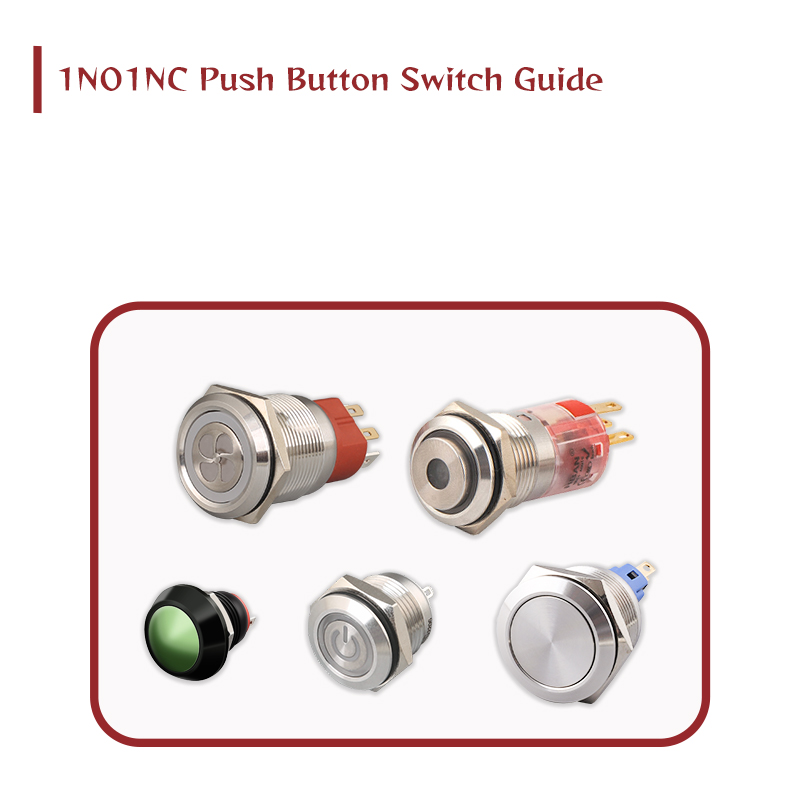 1NO1NC Push Button Switch Guide | HBAN Push button
1NO1NC Push Button Switch Guide | HBAN Push button
Upgrade your control system today with a reliable, space-saving
 Guide to waterproof push button switches that enhance equipment durability | HBAN Push button
Guide to waterproof push button switches that enhance equipment durability | HBAN Push button
 Discover The Surprising Benefits Of Using A Mushroom Push Button | HBAN Push button
Discover The Surprising Benefits Of Using A Mushroom Push Button | HBAN Push button
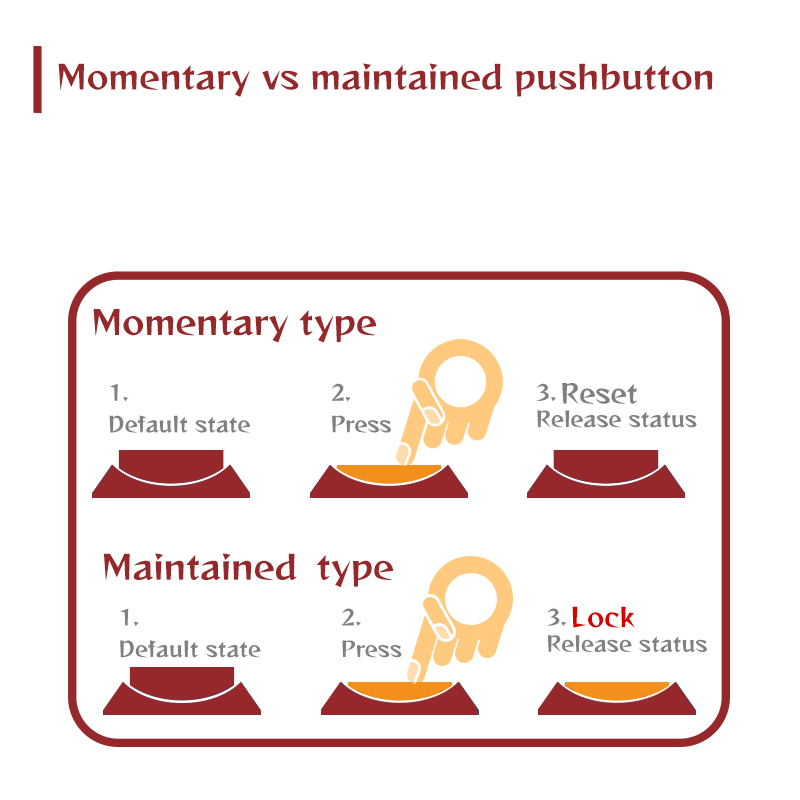 Momentary vs maintained push button | HBAN Push button
Momentary vs maintained push button | HBAN Push button








